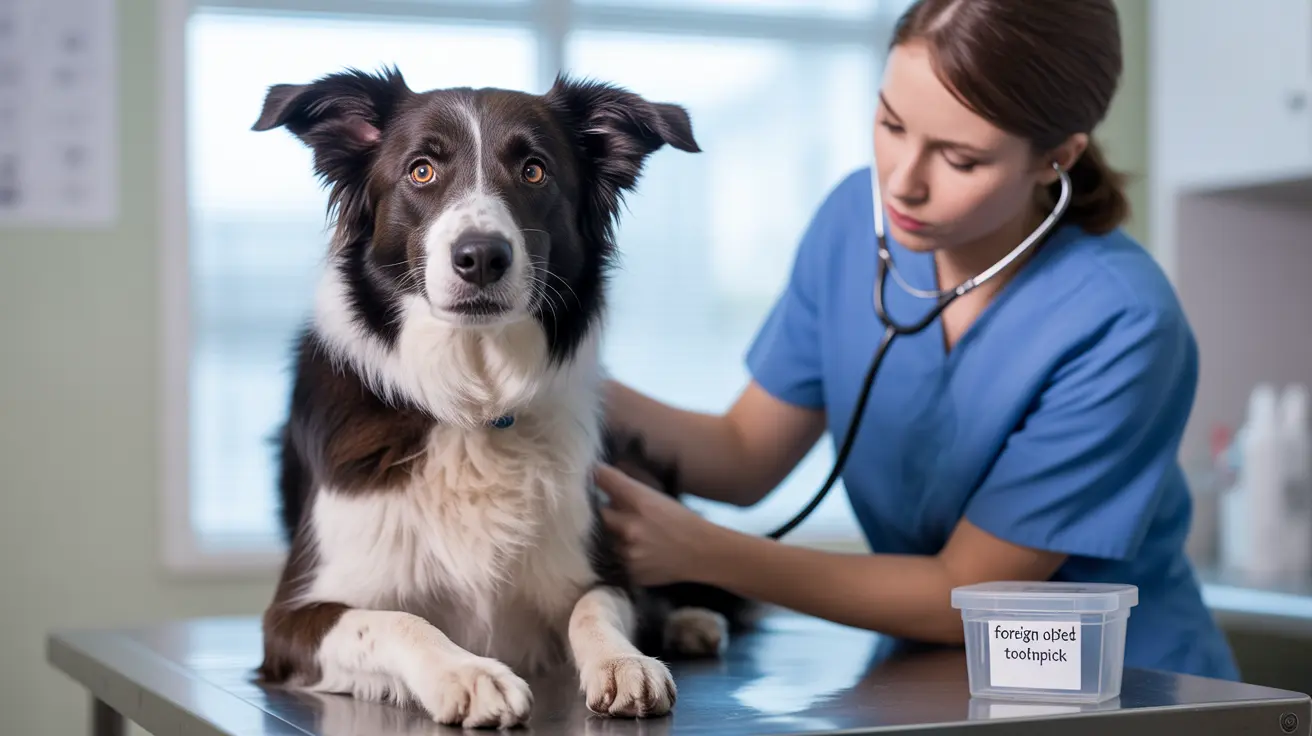Understanding the Dangers of Toothpick Ingestion
Toothpicks present unique hazards because they're sharp, rigid objects that don't break down in your dog's digestive system. Whether wooden or plastic, these objects can cause severe damage as they move through the digestive tract, potentially puncturing organs and leading to serious complications including:
- Internal bleeding
- Gastrointestinal perforation
- Peritonitis (inflammation of the abdominal cavity)
- Life-threatening infections
Immediate Steps to Take
If you witness or suspect your dog has swallowed a toothpick, follow these critical steps:
- Contact your veterinarian immediately
- Don't attempt to induce vomiting
- Monitor your dog closely for symptoms
- Keep your dog calm and still
- Transport to an emergency vet if advised
Recognizing Warning Signs and Symptoms
Watch carefully for these indicators that your dog might be experiencing complications from swallowing a toothpick:
- Excessive drooling or pawing at the mouth
- Vomiting or retching
- Lethargy and depression
- Loss of appetite
- Abdominal pain or bloating
- Difficulty defecating
- Bloody stool or vomit
Veterinary Treatment Options
Your veterinarian may employ several methods to address the situation:
Diagnostic Procedures
- Physical examination
- X-rays (though wooden toothpicks may not be visible)
- Ultrasound or CT scan
- Endoscopic examination
Treatment Approaches
- Endoscopic removal if the toothpick is still in the esophagus or stomach
- Surgery if perforation has occurred or the toothpick has moved too far
- Supportive care including pain management and antibiotics
Prevention Strategies
To prevent future incidents, implement these safety measures:
- Store toothpicks in secure containers
- Clean up thoroughly after parties or gatherings
- Train your dog to "leave it" on command
- Use alternative food serving methods
- Supervise your dog during meals and snacks
Frequently Asked Questions
What should I do immediately if my dog ate a toothpick?
Contact your veterinarian immediately for guidance. Don't attempt any home remedies or try to induce vomiting, as this could cause additional harm.
What symptoms indicate my dog might be suffering from toothpick ingestion?
Look for signs of distress such as vomiting, lethargy, loss of appetite, abdominal pain, or unusual posture. Any of these symptoms requires immediate veterinary attention.
Can toothpicks pass safely through my dog's digestive system on their own?
No, toothpicks rarely pass safely through a dog's digestive system. Their sharp points and rigid nature make them likely to cause internal damage or become lodged in the digestive tract.
How do veterinarians diagnose and treat a dog that swallowed a toothpick?
Veterinarians use various imaging techniques including X-rays, ultrasound, or CT scans to locate the toothpick. Treatment may involve endoscopic removal or surgery, depending on the toothpick's location and any damage caused.
Why is it dangerous to try to make my dog vomit after swallowing a toothpick?
Inducing vomiting can cause the sharp toothpick to damage the esophagus or other tissues on its way back up, potentially creating more severe injuries than if left to be removed professionally.
Remember, swift action is crucial when dealing with toothpick ingestion. Never wait to see if the situation resolves itself, as early intervention provides the best chance for a positive outcome. Keep your veterinarian's contact information readily available, and always err on the side of caution when it comes to your pet's safety.






